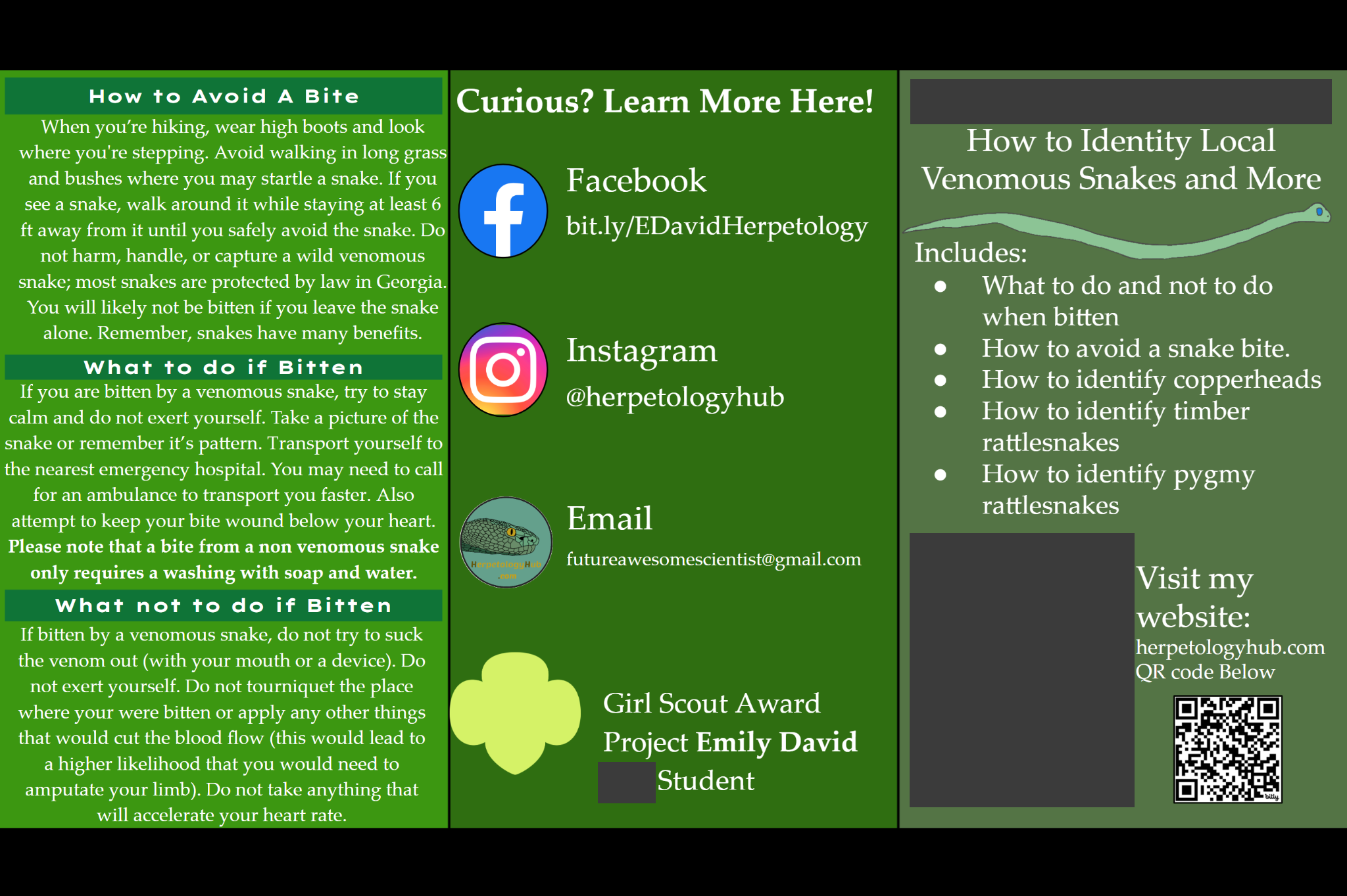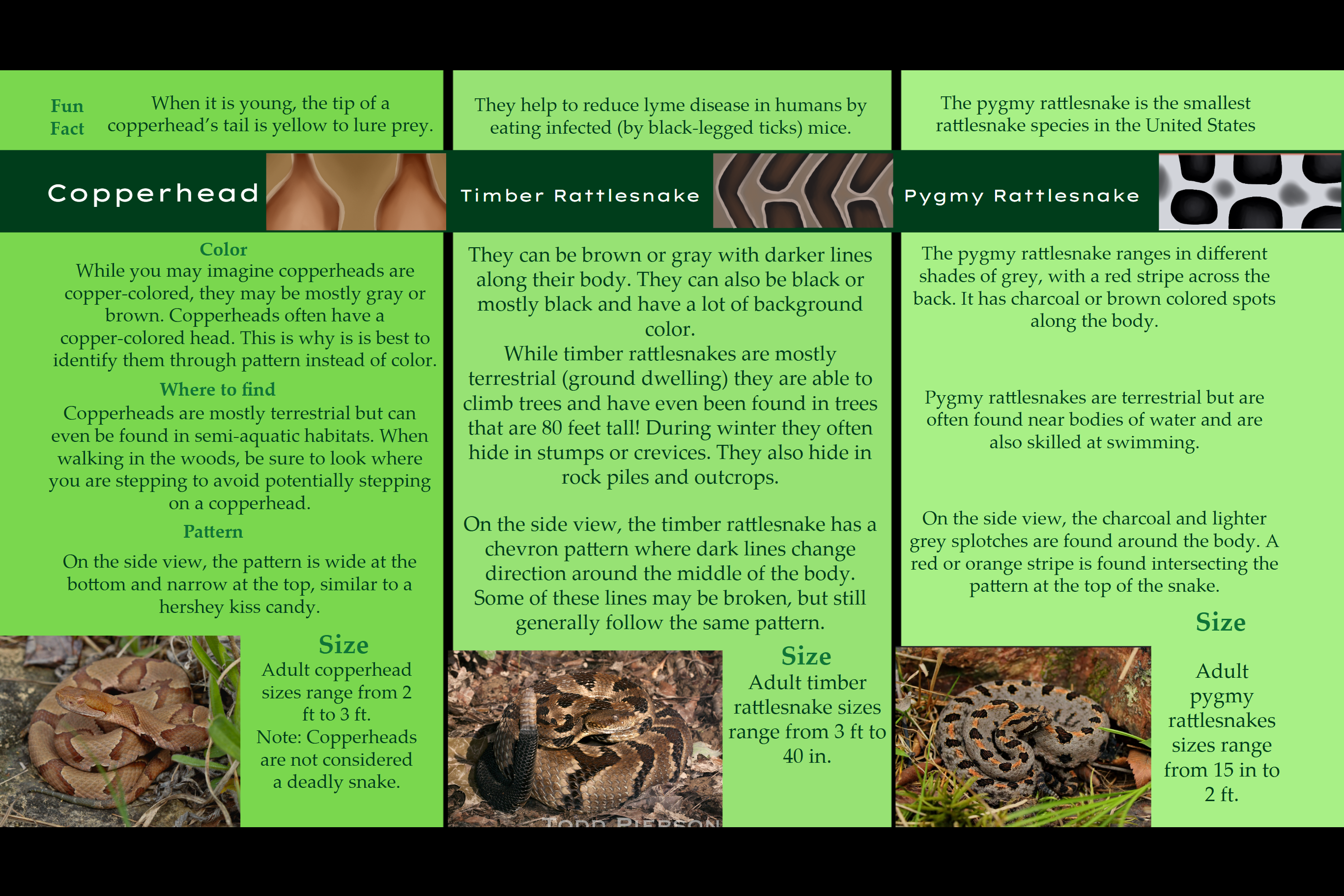
The Brochure Layout : Side Flap / Black / Front

As a part of my Girl Scout Gold Award, I made this brochure to help educate people in my local community about venomous snakes through these brochures. I aim for there to be less fear and more understanding of venomous snakes in my area as a result of this brochure. Note: the gray blocks are taken off of your view as to not reveal my location. They do not contain any other important details for my brochure.